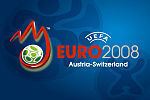 | ||
England vs croatia 21 11 2007 uefa euro 2008 qualifying group e part 11 of 11
This page describes the qualifying procedure for the UEFA Euro 2008.
Contents
- England vs croatia 21 11 2007 uefa euro 2008 qualifying group e part 11 of 11
- England vs croatia 21 11 2007 uefa euro 2008 qualifying group e part 1 of 11
- Seedings
- Tiebreakers
- Summary
- Groups
- Group A
- Group C
- Group E
- Group F
- Group G
- Top goalscorers
- References
England vs croatia 21 11 2007 uefa euro 2008 qualifying group e part 1 of 11
Seedings
Qualification coefficients were used to rank the teams according to their results in both UEFA Euro 2004 and FIFA World Cup 2006 qualifying stages. Only the group matches, and not any additional playoffs, counted towards the coefficients, also determining which pot a national team was put in. Some points to note:
The draw took place on 27 January 2006 in Montreux, Switzerland.
1 Greece were first seeded, as European champions
Austria (1.333) and Switzerland (1.833) were already assured of places at Euro 2008 as host nations.
Tiebreakers
If two or more teams are equal on points on completion of the group matches, the following criteria are applied to determine the rankings
- Higher number of points obtained in the group matches played among the teams in question
- Superior goal difference from the group matches played among the teams in question
- Higher number of goals scored in the group matches played among the teams in question
- Higher number of goals scored away from home in the group matches played among the teams in question
- If, after applying criteria 1) to 4) to several teams, two or more teams still have an equal ranking, the criteria 1) to 4) will be reapplied to determine the ranking of these teams. If this procedure does not lead to a decision, criteria 6) and 7) will apply.
- Results of all group matches: 1. Superior goal difference 2. Higher number of goals scored 3. Higher number of goals scored away from home 4. Fair play conduct
- Drawing of lots
Summary
Below is a table containing all seven qualifying groups. Teams that secured a place in the final tournament are highlighted in green. The order of teams is by final group position. For the first time, UEFA named the qualifying groups alphabetically rather than numerically.
Hosts
Groups
The qualifying process started in August 2006. Austria and Switzerland were granted places in the tournament finals as host nations.
The qualifying format had been changed compared to the previous tournament. The winners and runners-up from seven groups will automatically qualify for the Championship, with the hosts filling the other two slots in the 16-team tournament. Therefore, there were no play-offs between teams finishing in second place in the groups. Six of the qualifying groups contain seven teams, and the other, eight.
As the official successor of the previous football association, Serbia inherited the position originally allotted to Serbia and Montenegro in Group A prior to the dissolution of the state union. Montenegro were granted UEFA membership after qualifying had started and thus were not able to participate in this European Championship.
Key:
Group A
(*) Armenia and Azerbaijan played only 12 matches due to UEFA's decision to cancel the two fixtures between these countries, with no points awarded to either team for the cancelled matches
Notes on the tie-breaking situation:
Group C
Notes on the tie-breaking situation:
Group E
Notes on the tie-breaking situation:
Group F
(*) The abandoned match between Denmark and Sweden was a 3–0 win awarded to Sweden, after a UEFA hearing on 8 June 2007
Notes on the tie-breaking situation:
Group G
Notes on the tie-breaking situation:
Top goalscorers
Source: UEFA
